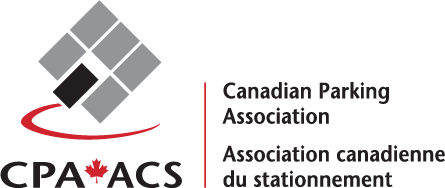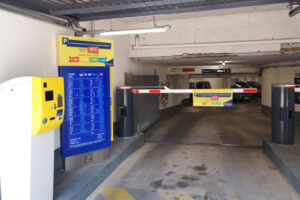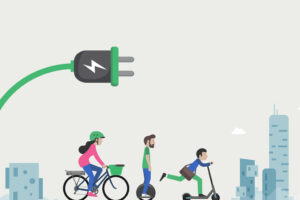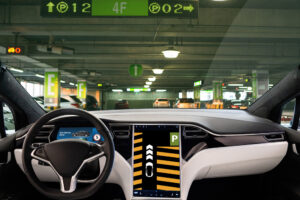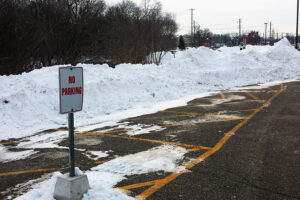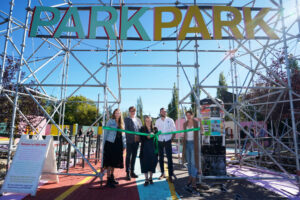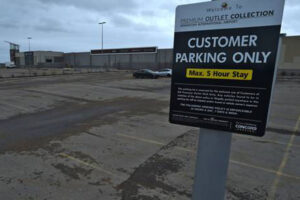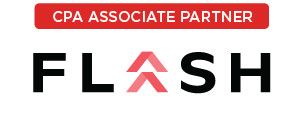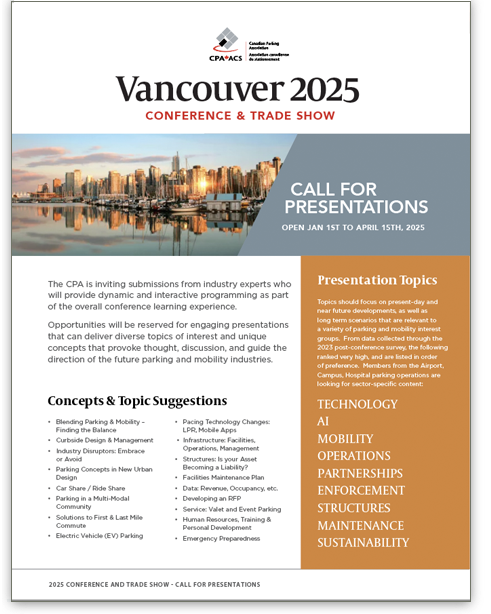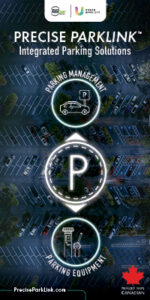By Baptiste Corno
Dynamic pricing is clearly the solution nowadays to boost your parking facilities revenue, enhance customer experiences, increase the attractiveness of a city center, lead urban flow and provide drivers with discounted parking spaces. Drivers, parking managers or city managers, this article is made for you.
Our world and our society, are in constant evolution. We will witness considerable changes in the next decade. Some major events have already changed our world this year and we are likely to see more. This decade is the start of a new cycle. We must individually and collectively reconsider our habits and consumptions modes to sustain our future.
Mobility must be one of the top priorities to reconsider. It must evolve toward more autonomy, shared transportation, environmentally friendly and connected usage. Car Parks must also evolve in the same direction and all of us must adopt a very positive approach if we want to succeed.
The development of dynamic pricing solutions in parking facilities is one of the first areas to change because it will help everybody in the community, especially consumers and their budgets. By helping a wider range of the population, Dynamic Pricing can be used as a public policy that benefits a large number of people while providing optimization for private entities. Dynamic Pricing can be the solution of numerous challenges. Xavier Zakoian, CEO & Founder of Kowee, leader in Dynamic Pricing solution for the parking industry stated that: “The objective to achieve is not necessarily revenue optimization. It can be, but it can be customer satisfaction, customer targeting, occupancy maximization and so on”. Dynamic Pricing techniques are an answer to the actual issue regarding urban traffic flow in Smart Cities.
Infotraffic presented an example of Dynamic Pricing strategy at the Virtual Canadian Parking Association Conference…
By Joni Eros
We take choice for granted in our daily lives. We choose what we’ll eat or drink; what we listen to on the radio or watch on tv; what products we use each day; and who to befriend in our lives. There’s a cliché about life being about choices, but it’s true. We make so many every day that we begin to take them for granted.
Historically, choice has not been a significant element of parking. Sure, drivers get to choose where to park, but that is pretty much where their freedom of choice ends. Once they choose a parkade or on-street space, the parker has to use the meter the city has installed, or the PARCS or pay-on-foot equipment the garage offers.
Why does choice matter when it comes to parking payment? Simply put, we don’t all like the same things. Some people are Coke, some are Pepsi; some are Apple, and some are Windows; some like Tim Hortons and some—ok, everyone likes Tim Hortons.
The chasm is particularly wide when it comes to technology. The most obvious 21st Century example can be found in smartphones. Some of us are iPhone users and some are Android. Different people experience technology differently, and that affects their preferences. While one phone may seem alien in its layout and functionality, the other seems entirely intuitive.
The good news is that the evolution of the parking landscape is drastically changing, providing drivers more choice than ever. This is particularly true when it comes to mobile payment. As mobile payment becomes increasingly popular, municipalities, institutions of higher education, and private parking operators are adopting the multi-vendor model on a global scale. And this increased choice benefits both drivers and parking organizations.
Choice Benefits Everyone
In today’s technology-dominated parking world,…
By Kevin Uhlenhaker
More than six months into the Covid-19 pandemic, the parking industry is still reeling. Canada has done better than its neighbor to the South, but the measures that were required slow the spread of the virus (at least relatively speaking) have also had a major impact on parking and transportation. The combination of government-enforced lockdowns and corporate work-from-home policies decimated parking demand, and while people have begun to venture out again and the economy is showing signs of rebounding, public experts tell us to prepare for a very difficult winter.
In fact, the impact of the pandemic will be felt for years to come. Parking revenues at least in many locations will likely be down for the foreseeable future—at least into next spring and, perhaps summer—as public health will be a primary consideration in how owners and operators manage their parkades.
New Approaches to Staffing
One of the most obvious impacts of the Covid-19 crisis on parking operations will be found in staffing. As parking lots and parkades begin to fill up again, parking owners and operators will need to find ways to minimize interactions between staff and parkers. Many experts believe that the Coronavirus is still going to present an on-going risk even after there is a widely distributed vaccine. Without draconian governmental intervention a non-insignificant portion of the population will opt to not get the vaccine and for others, it may not be 100% effective or long lasting.
Parking owners and operators can help to protect their customers and employees by limiting face-to-face interactions. That begins with moving staff out of areas of the facility where they are likely to come into direct contact with parking customers. The most obvious place to start is at exit booths. When staff are taking payment…
By Blake Laufer
Author’s Note: I was fortunate to present at the recent CPA Virtual Conference on the topic of AI, data, and video analytics in parking. As a result of that presentation I was asked to expand on the topic for an article.
According to professor Pedro Domingo at the University of Washington: “People worry that computers will get too smart and take over the world… but the real problem is that computers are too stupid and they’ve already taken over the world.”
Parking managers recognize the need to have data for decision-making. When meeting with colleagues or bosses every decision needs to be supported by charts and graphs and data to garner support. The good old days management by intuition and experience are gone.
Computing systems, and especially those we find in parking operations, are wonderful at collecting massive quantities of raw data. But raw data isn’t useful to the typical parking manager; the data needs to be converted into information before it is useful.
Raw data is a raw material like iron ore, while processed data is like finished metal, something that can be used for productive ends.
Artificial intelligence comes in a variety of forms including natural language processing (“OK Google…”), making recommendations such as what to purchase on Amazon or what to watch on Netflix, and even predictive analytics (hurricane forecasting).
In parking there is one type of AI that we encounter the most, machine learning.
Machine learning is an application of pattern matching. That is, if you show the computer enough patterns then it becomes able to detect and predict that pattern in new data that it has never seen. A simple pattern may only need 10 or 20 inputs before the machine starts to recognize it. A complex pattern…
Brendan McEwen – Director, Electric Mobility & Low Carbon Strategies, AES Engineering Ltd.
Over the next two decades, Canadian cities will experience a profound transition from transportation systems dominated by personal vehicles with combustion engines to electric mobility systems. “Electric mobility” encompasses personal electric vehicles (EVs), electric transit, e-bikes, car-sharing, ride-hailing, ride-sharing, and perhaps one day, autonomous robo-taxis. Parking professionals have a crucial role to play in speeding the transition to electric mobility, realizing the benefits that it can provide to their communities and to parking authorities’ bottom line.
The transition to electric mobility will provide financial, safety and quality of life benefits for all members of our community. Depending on where you are in Canada, EVs typically cost 65% to 80% less to fuel than comparable internal combustion vehicles. Likewise, Consumer Reports recently published data confirming that EVs have half the maintenance cost of conventional vehicles. All told, Canada’s 2 Degrees Institute estimates that the average Canadian EV driver will save $27,000 in fuel and maintenance costs over a 10-year operating life.
EVs still currently have higher initial costs than conventional vehicles, due to the cost of batteries. However, battery costs are declining rapidly – industry average lithium-ion battery costs have reduced from approximately $1200/kWh of battery capacity in 2010, to $156/kWh in 2019. Average battery costs are projected to decline to $100/kWh by about 2024, at which point there will be no price premium for EVs. Indeed, Elon Musk recently described how Tesla can achieve costs of approximately $65/kWh in the next three years. Given the improvements in battery technology and manufacturing, sources as diverse as the Canadian Vehicle Manufacturers Association, International Council on Clean Transportation, and Bloomberg New Energy Finance agree that battery cost reductions…
By David Rich
The parking industry began discussing sustainable parking nearly two decades ago. At first the entire concept seemed counterintuitive. How could builders design structures to maximize performance while minimizing waste and actually improve the environment? The idea now no longer seems so foreign and through creative design we can create parkades that minimize the impact of vehicles on the environment – at least while those vehicles are in the parking facility.
Initially, the primary focus was on green roofs, recycled content, PV solar arrays, and operational strategies. Idle reduction was also a primary key area of focus. If we could design entrances and exits that minimize idling time, the amount of exhaust emissions created by queuing vehicles could be significantly reduced. As for design features, early ideas were admittedly modest. Some parkades had green roofs that reduced their carbon footprint; others included solar panels and green screens. In the infancy of green parking, designers did what they could to promote sustainability, but it was a learning process and left much room for improvement.
Sustainable Approaches
Sustainable strategies have matured significantly over the past twenty years and play an important role in promoting green parking. Sustainable parkades often integrate technologies and strategies such as energy efficient lighting and ventilation systems, guidance systems that assist drivers in finding an available space more quickly, electric vehicle charging stations, carsharing programs, and micro-mobility options.
They also include stormwater management practices like bioswales, permeable pavement, and other strategies that reduce runoff. Many of these stormwater management strategies can also collect rainwater for re-use in landscape irrigation, hydrating landscaping or even for cleaning and maintaining the parkade itself. By recycling rainwater, this design element can reduce costs and the need to use city water for…
By Chris Scheppmann
Parking guidance is one of the most important technologies to emerge in recent years. The initial appeal of the technology is that it dramatically improved the parking experience while, at the same time, helping to maximize parking occupancy and improve management. Drivers benefit by not having to waste valuable time searching for a parking space.
Parking guidance also benefits owners and parking organizations by providing essential data. When parking owners and managers have access to real time data about how their parking facilities are being utilized, whether they are at full or near-full capacity, and when they tend to be busiest, they can make better decisions about how to manage those parking resources. Better and more comprehensive information tends to lead to better management decisions. It easy to see how parking guidance offers a classic win/win scenario: drivers get a better parking experience, while parking owners improve their operations and make more money.
And with the impending dawn of the Smart City age and the eventual introduction of self-driving vehicles, parking guidance will become all the more important. It will be the key technology for the success of smart cities because by guiding drivers directly to available parking, it can significantly minimize travel times and reduce roadway congestion. Some cities in the United States are already connecting the parking guidance networks of private parking facilities to their municipal grids to create city-wide guidance networks, and that will soon be the norm in cities across Canada, as well.
Intelligent Simplicity
Everyone loves the concept of parking guidance, but in the past, many owners have been scared away by the cost. When the technology was introduced, owners had just two options: install sensors over every parking stall at considerable expense, or use less expensive technology that…
By Pam Strong, Lake Simcoe Region Conservation Authority
In the Q2 2020 issue of Parker magazine, we highlighted the significant issues that salt is causing to our road and parking lot infrastructure, as well as to our freshwater resources. Many stakeholders, including road managers and environmental agencies, have been working to tackle this issue and apply less salt; however much of this effort has focused on roads. As part of this effort, the Lake Simcoe Region Conservation Authority retained GHD in 2017 to develop the Parking Lot Design Guidelines to Promote Road Salt Reduction. These guidelines were developed with the recognition that parking lots contribute a significant amount of chloride from salt, approximately 20% in the Lake Simcoe watershed, and significantly more in more urbanized areas, such as Toronto and Peel Region. These guidelines provide some tangible options for those involved in parking lot design and maintenance to reduce the amount of salt that is used in these areas, thus protecting parking lot infrastructure and water resources.
The guidelines were developed to demonstrate to those involved in the planning, design, and maintenance of parking lots that they can be designed from the outset in such a way that they require less salt to be applied to maintain an acceptable level of service and safety. Through stakeholder interviews and design charrettes, we identified four design features that can help to reduce the amount of salt needed to maintain safe conditions. Also included with the guidelines are site examples that demonstrate how the features can be used on several different development types. These site types include:
- Large size commercial development (greater than 10 ha)
- Medium size commercial development (5-6 ha)
- Small size commercial development (less than 3 ha)
- Institutional development (public school)
We also developed two…
By Sidney Starkman, Planning & Development Analyst, Calgary Parking Authority
When you ask people outside of the parking industry what they think about when they hear the words “surface parking lot”, they may say: unwelcoming to pedestrians, only used at peak times or bland space. Though we can’t boast about being home to the largest parking lot in the world, we do have an awful lot of surface parking space in in Calgary, Alberta. We at the Calgary Parking Authority (CPA) believe in building a better Calgary by working collaboratively to support the current and future parking needs of the communities we serve. Given this mandate and the ample space available, we set out to change the narrative about what surface parking lots can look like, how they function, and how they integrate into a neighbourhood: we launched a placemaking project to reshape a lot by engaging professionals to innovate the space.
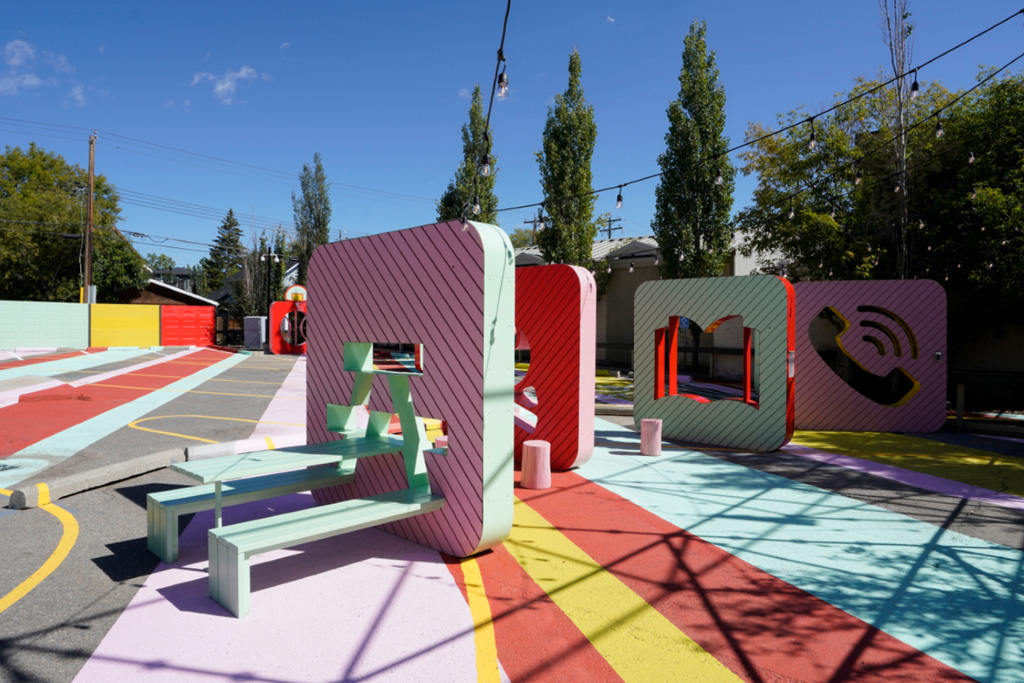
This project began with an open design competition managed by the Calgary Municipal Land Corporation (CMLC). The call for submissions asked for a creative intervention that re-imagined how surface parking lots can be designed; something that would delight and inspire, while continuing to operate successfully as a parking lot.
The goals of the project were to:
- encourage critical thought and conversation on parking lots;
- beautify a utilitarian space;
- improve the quality of life for users and residents; and,
- place make, turning a single-use space into somewhere people can have a positive, interactive, and emotional experience.
To select the perfect location, we analyzed all available surface parking options within the city. We wanted at a busy, mid-sized lot (30 stalls) which would guarantee visitors to the space, and one located in an active community where residents embrace unfamiliar projects. We were…
By Colby Cosh
A few weeks ago, Edmonton’s council voted to remove all minimum parking requirements from real-estate developments in the city, which becomes the first in Canada to do this. Builders will, once the relevant bylaws are squared away, be free to use their own judgment in allocating parking to housing units and offices. If they choose, they can have none of it.
This was possible partly because Edmonton’s old parking requirements were absurdly grandiose. (Among its other distinctions, the city, thanks to its flagship shopping mall, is home to the world’s largest parking lot.) But it is also a triumph, in a most unexpected place, for a little band of intellectual guerrillas sometimes called the Shoupistas. They are the followers of Donald Shoup, an 81-year-old UCLA economist and urban planner who is considered the Sir Isaac Newton of parking.
Parking — boring topic, ain’t it? Shoup latched onto it as a young-ish man because he was a follower of Henry George (1839-1897), the intriguing “single tax” economic theorist of the 19th century. George favoured a tax on the unimproved value of land parcels as a way of socializing pure rent (the value earned from occupying a mere location) and encouraging development. It is a concept that many economists still like, although it is potentially difficult to apply at scale. The widely used concept of tax increment financing is one example of Georgism in practice.
Shoup started out trying to fit parking spaces into the Georgist picture, but the boring topic was so underexamined that he found himself having to build a general theory of parking. He quantified the relationship between parking and traffic, finding that people “cruising” for parking spots were more destructive than anyone had imagined, and he inspired waves of research into the hidden…

